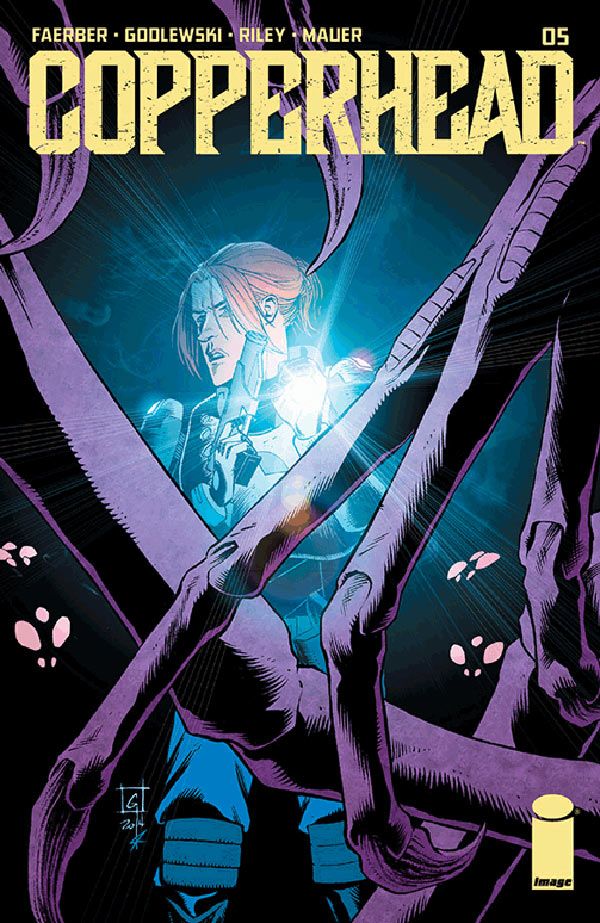For a space Western, "Copperhead" concludes its first arc with a surprising dearth of shootouts and arrests. Clara and crew wrap up the Sewell case with the restrained and realistic tool of, as Boo puts it, "a little thing I like to call 'police work.'" Even without the sharp-shooting showdowns and alien attacks, "Copperhead" #5 is a vibrant read. Jay Faerber's character work and Scott Godlewski and Ron Riley's world building continue to impress and, though this issue moves a little slower, that pace helps it feel more like a finale.
I don't like to discuss spoilers too heavily, but the ending of "Copperhead" #5 is honestly its chief strength. Faerber eschews genre tropes in favor of a more unexpected, complicated conclusion. Clara and Boo solve the case, but their sleuthing doesn't result in anything actionable. There's no one to arrest or take down, no bad guys to throw in prison. Clara understandably complains, "This whole situation sucks. I haven't accomplished anything," but Faerber turns her frustration on its head. After the case is wrapped up, he shows her solving smaller, more human problems, like finding Annie's dog or giving Mrs. Sewell a new job. It's a lovely illustration of how cops can positively affect communities outside of incarcerating their inhabitants.
Though the ending resists genre trappings, Faerber does give into convention in the beginning of the issue, kicking things off with what feels like an unnecessary fight scene. The action is well-written and it certainly helped to create momentum coming in from issue #4, but it's still a very noticeable nod to convention. Luckily, Godlewski and Riley do such lively, readable work on the two-page spread that I didn't mind. The fight with the Natives is speedy and smart and the midnight purple coloring offers a clear break from the lighter, dustier palette in the rest of the story.
In general, Godlewski and Riley create a lived-in, likeable atmosphere. Riley's washed, watercolor-style backgrounds, like the skylines in old Western films, give "Copperhead" a lot of its atmosphere. More importantly, they complement Godlewski's just-alien-enough architecture and ground the sci-fi elements in reality. Both Godlewski and Riley also do great work with the characters themselves. Godlewski doesn't ink too heavily, letting Riley's colors ride over the figures, and Riley somehow makes the Sewells' single eyes so full of emotion and expression. I never thought a slug would make me feel so sad.
What I like most about the art in "Copperhead," though, is the way that Godlewski makes the most out of the issue's multiple transitions. He opens almost every new scene with a surprising exterior establishing shot, such as a shop sign, apartment window or city skyline before the next panel dives into the (often interior) scene itself. It's an interesting choice and I'll admit that it brought my reading to a stop in the first issue. However, I've come to appreciate these quirky world building snapshots. They let Godlewski show off all the thinking that's gone into "Copperhead" while slowing the transitions to a mosey.
Issue #5 solidifies "Copperhead" as a fun, thoughtful series. It's combined its punchy, pulpy concept with nuanced characters and a believable universe and I can't wait for the next arc.

